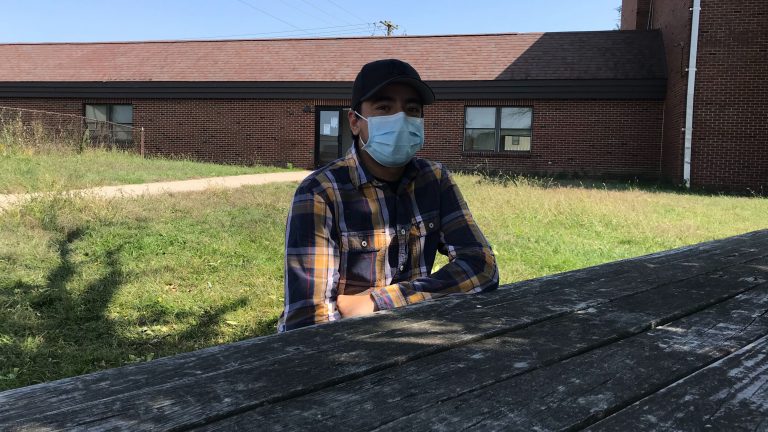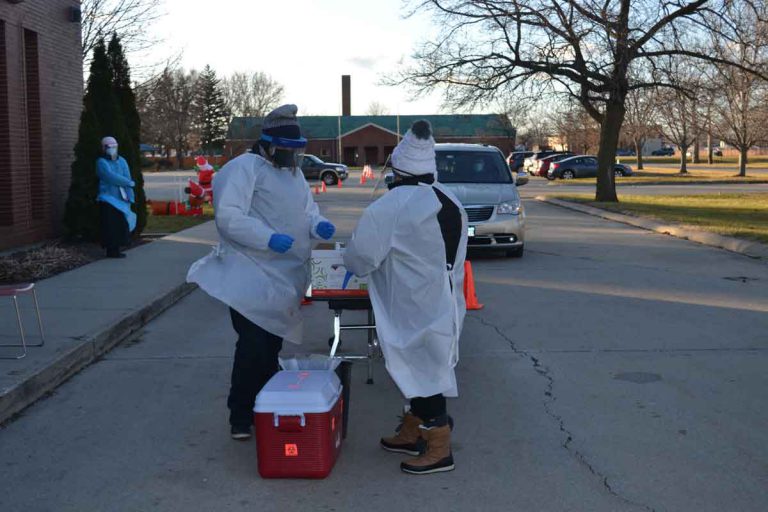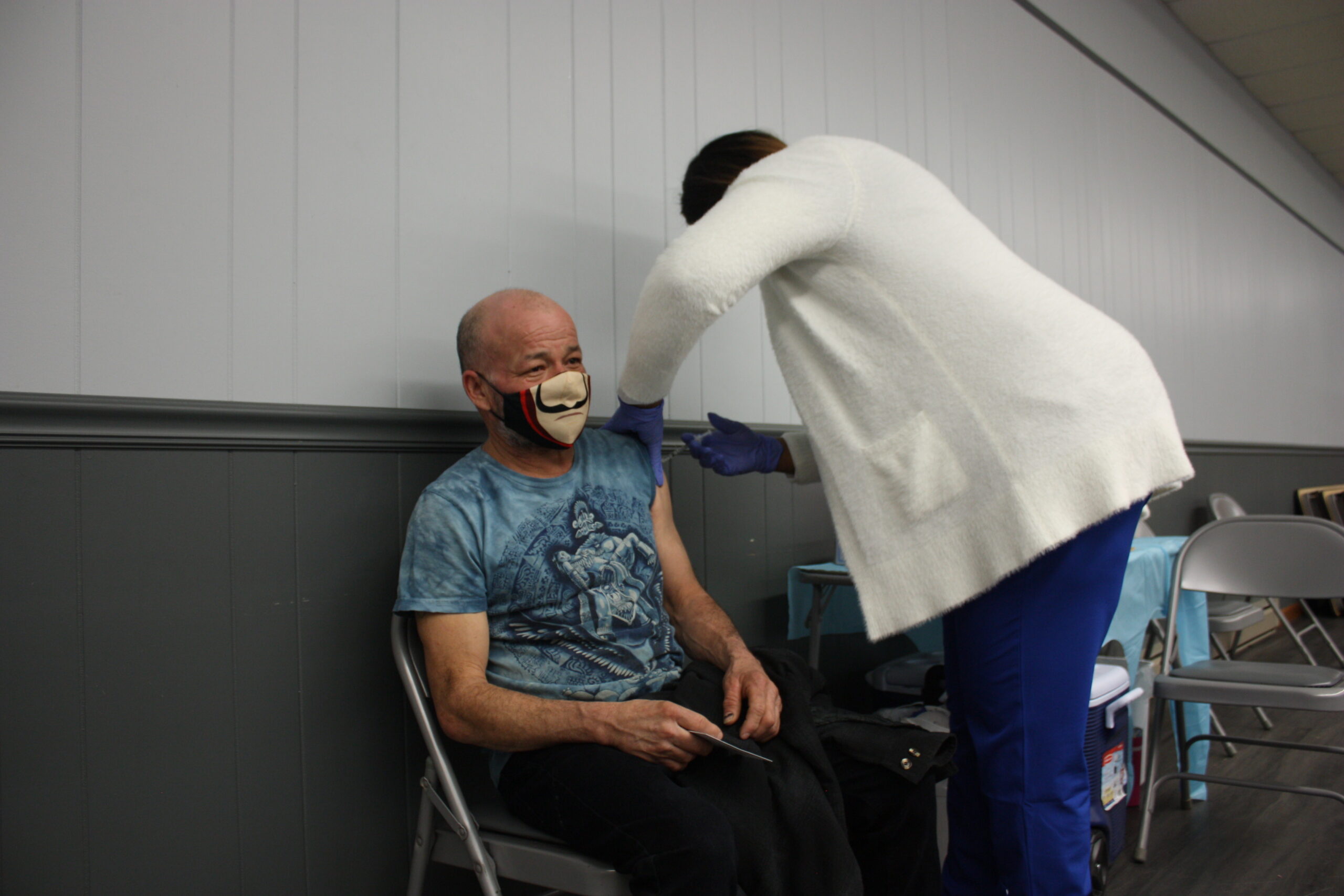RISKING
IT ALL
How Farmworkers In Illinois Endured The Coronavirus Pandemic
BY DANA CRONIN and CHRISTINE HERMAN
Every year, thousands of people take to the fields of Illinois to plant, cultivate and harvest the state’s crops. Many farmworkers travel here from all over the country and world to do the essential work that props up Illinois’ agricultural economy.
Farmworkers were hit disproportionately hard by the pandemic due in part to their often-crowded living and working conditions and lack of access to health resources and a financial safety net.
Illinois Public Media’s agriculture reporter Dana Cronin and health reporter Christine Herman teamed up to track the pandemic’s toll on this essential workforce.
From uncovering one of the largest outbreaks at an Illinois migrant camp to documenting the state’s vaccine rollout to this vulnerable population, they tell the story of how farmworkers in Illinois endured the deadly pandemic.
Just as COVID-19 cases began surging, migrant farmworkers had begun their annual days-long journey to Illinois.
Medical clinics snapped into action to provide COVID-19 testing to arriving workers.
Among the first group tested in Rantoul, Ill., at least eight were infected. But they waited days before isolating because their employer declined to pay for expedited tests, local health officials said.
October 2020: The Work Must Go On
At least 100 farmworkers in Illinois fell ill by mid-summer. A migrant camp in Rantoul had one of the largest outbreaks in the county.
Despite the risks, many farmworkers said they must work to support their families back home, including Samuel Gomez, who came from Mexico with his 66-year-old father.
“I worry about my dad because he’s older,” said Gomez.
January 2021: A Lack Of Protection
For farmworkers in Rantoul, the nearest testing site was 18 miles away and not accessible via public transportation.
But even with more convenient testing, agricultural workers were still wary of showing up.
Building trust with members of the farmworker community would turn out to be critical to ensure access to both testing and the COVID-19 vaccine.
March 2021: One Year Later, For Some, A Sigh Of Relief
Some states — including Illinois — prioritized farmworkers in the vaccine rollout, which came as a relief to many.
“We have the fortune to… have a government that cares about the people that come to work in the fields,” said Jorge Feria, 34, a guestworker from Mexico who was vaccinated in Cobden, Ill., in February 2021.
“We are very grateful.”
A Look Ahead
In all, since the start of the pandemic, about half a million workers at farms and food processing plants have contracted the coronavirus and at least 9,000 workers have died from it, according to Purdue University researchers.
These harrowing statistics could have been avoided if the right protections had been in place for these vulnerable workers, advocates and experts say.
Some community health centers serving hard-to-reach farmworker populations were unable to get access to vaccines for several months.
And while the single-dose Johnson & Johnson vaccine offered hope for improving access in rural areas, state officials decided against using it at mobile clinics due to issues surrounding equity.
While many farmworkers in the U.S. were vaccinated in early 2021, others waited months, resulting in more illness and death.
A more equitable system — that includes better protections and provisions for vulnerable workers — is needed to prevent a repeat of the past year’s devastation.
Continue to follow Dana and Christine’s work on Twitter: @DanaHCronin and @CTHerman





